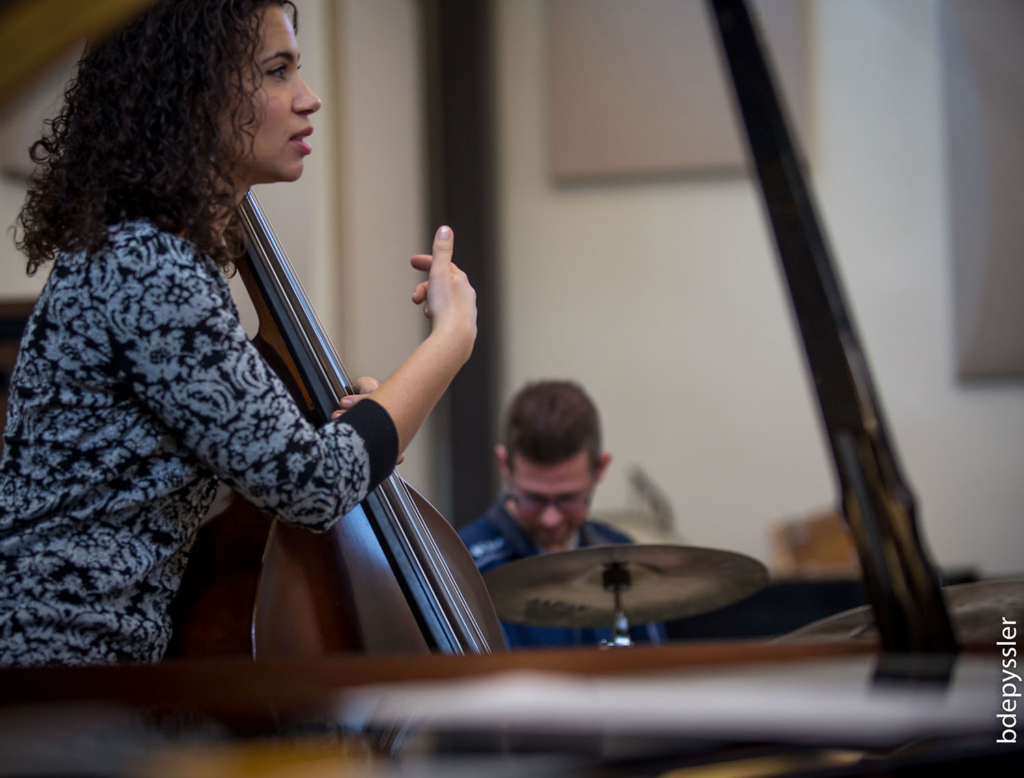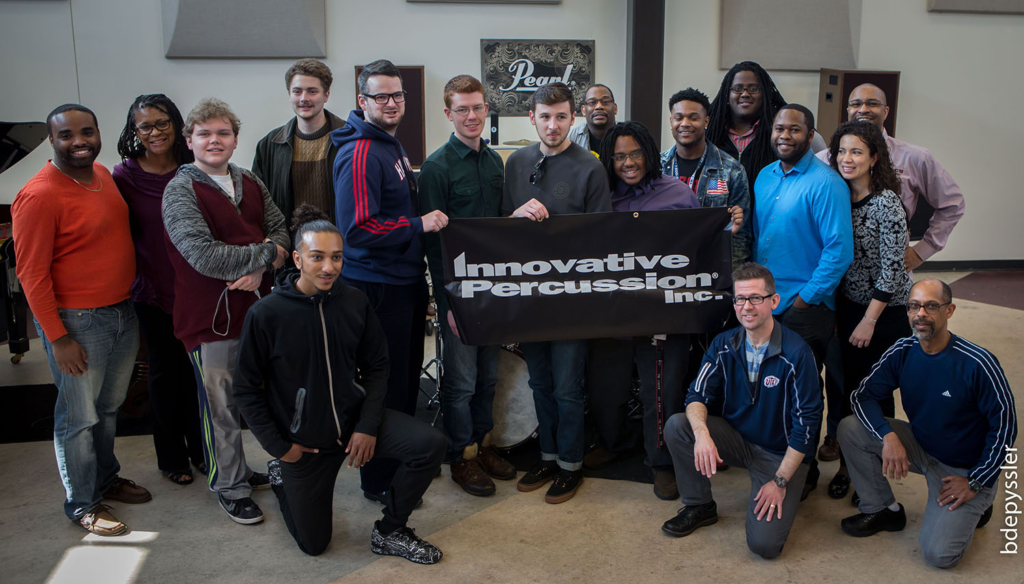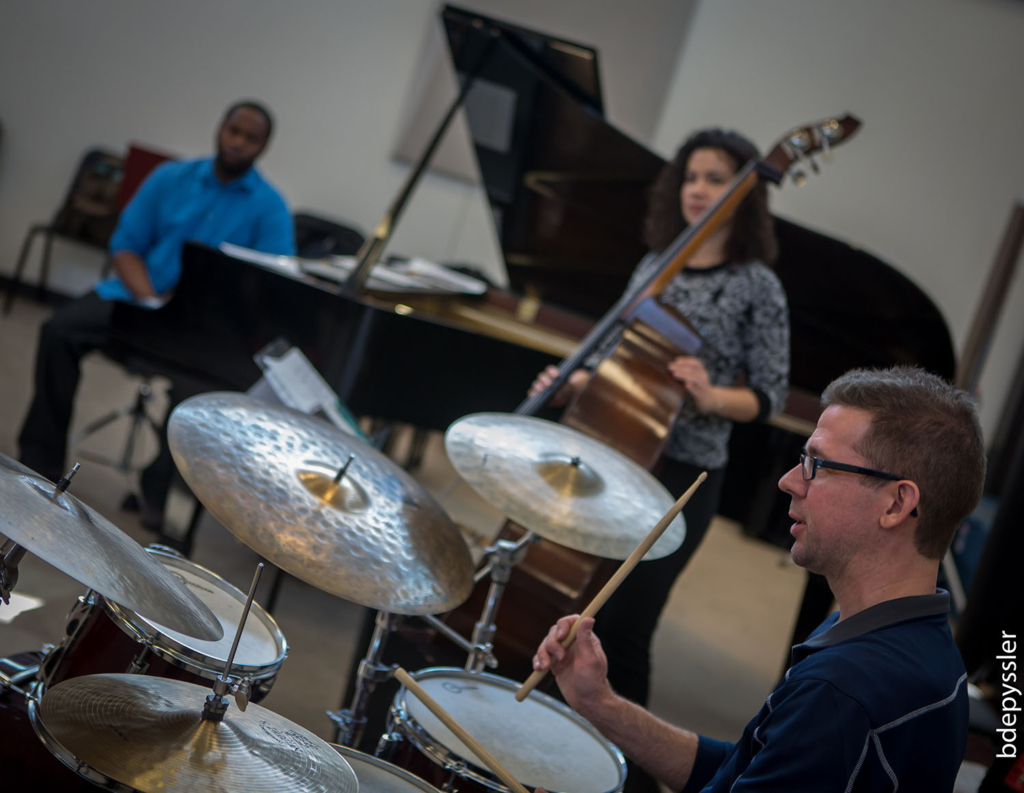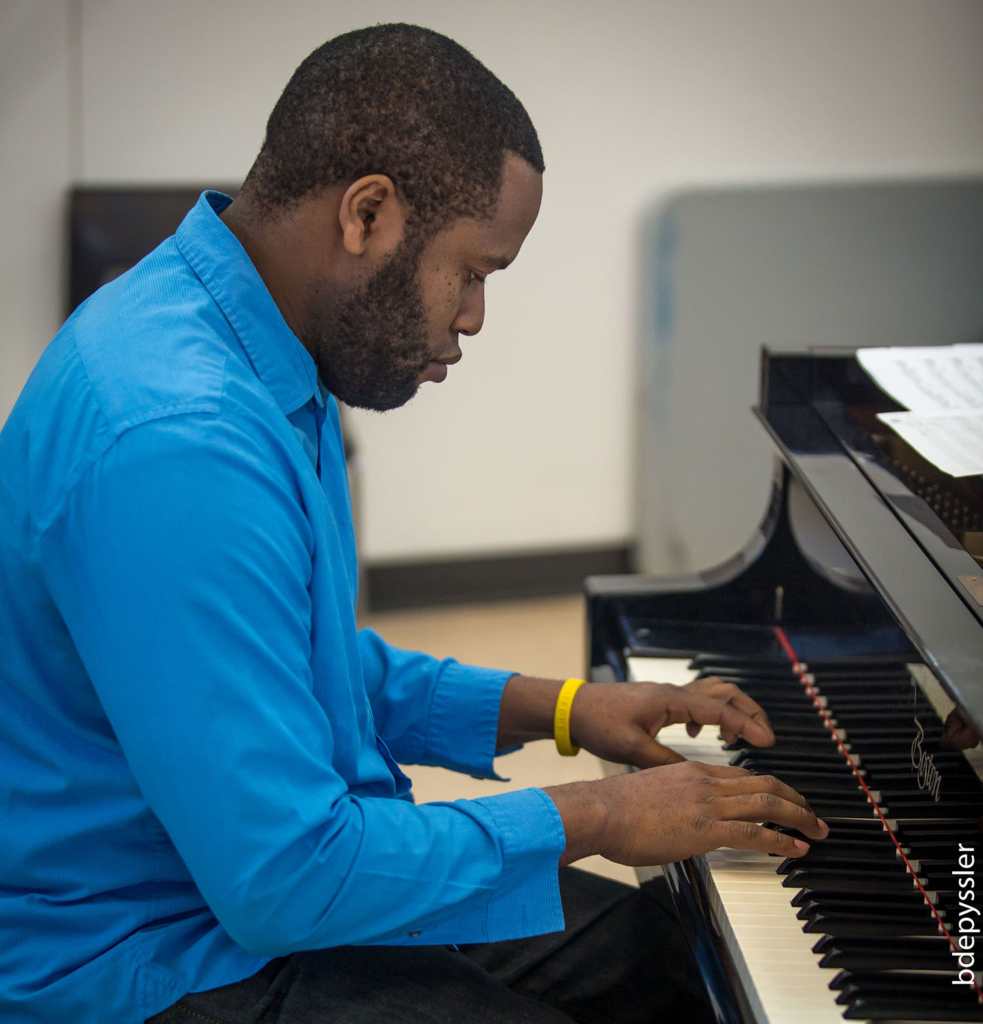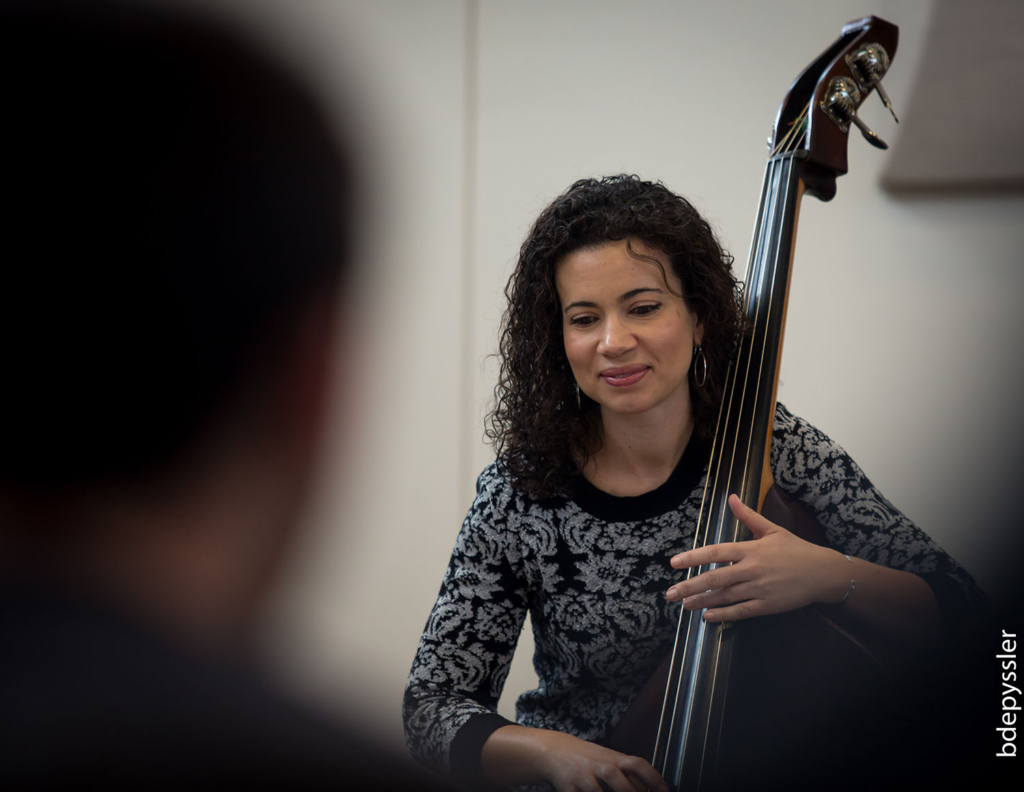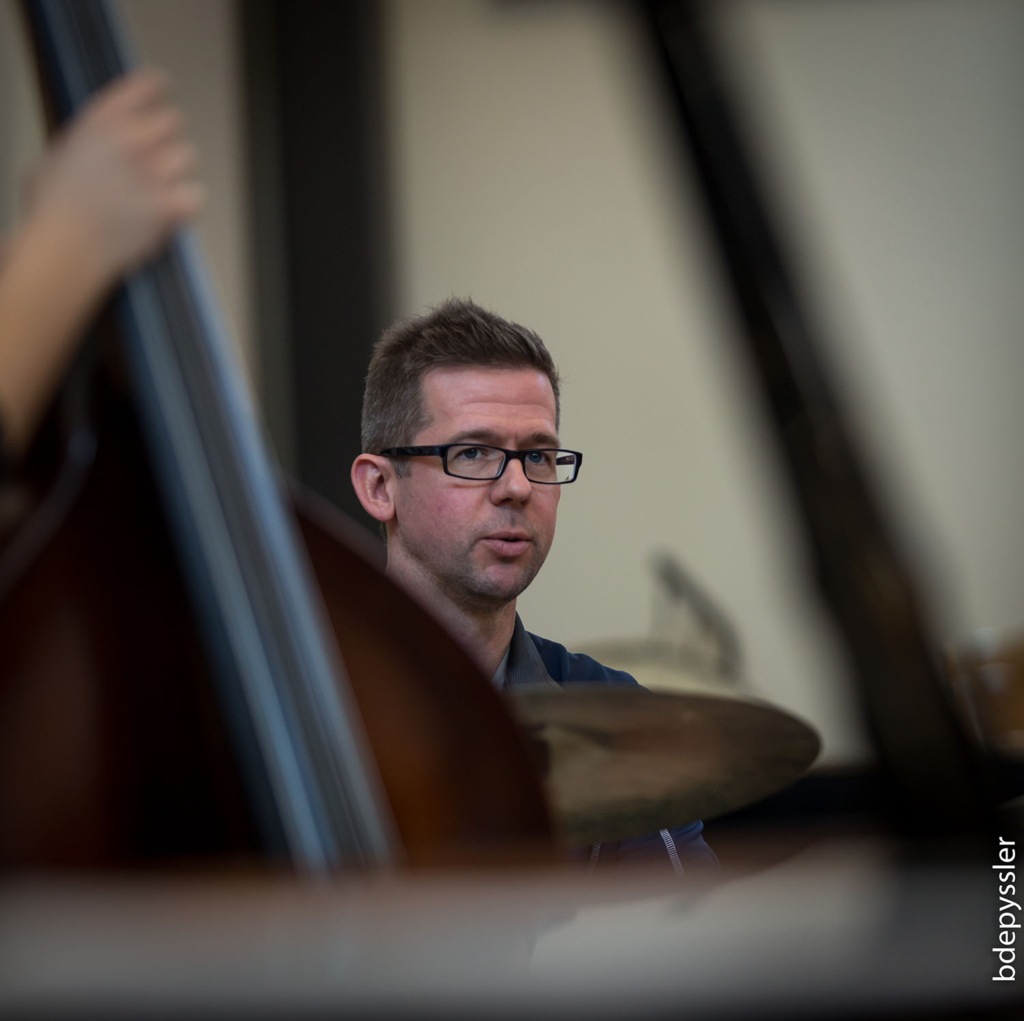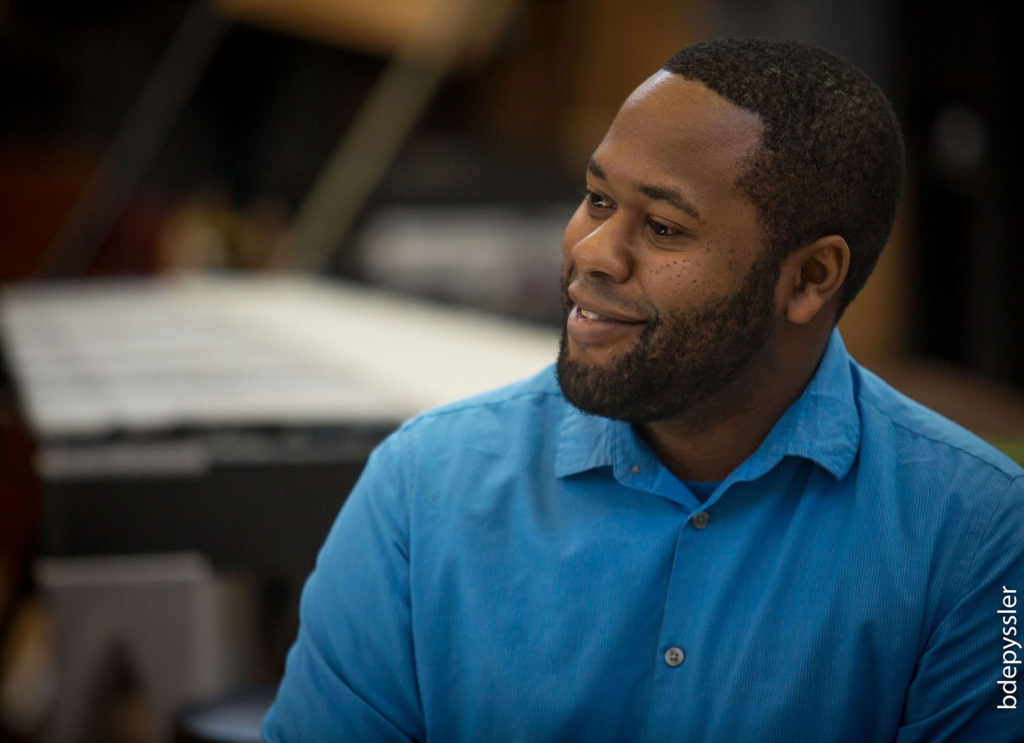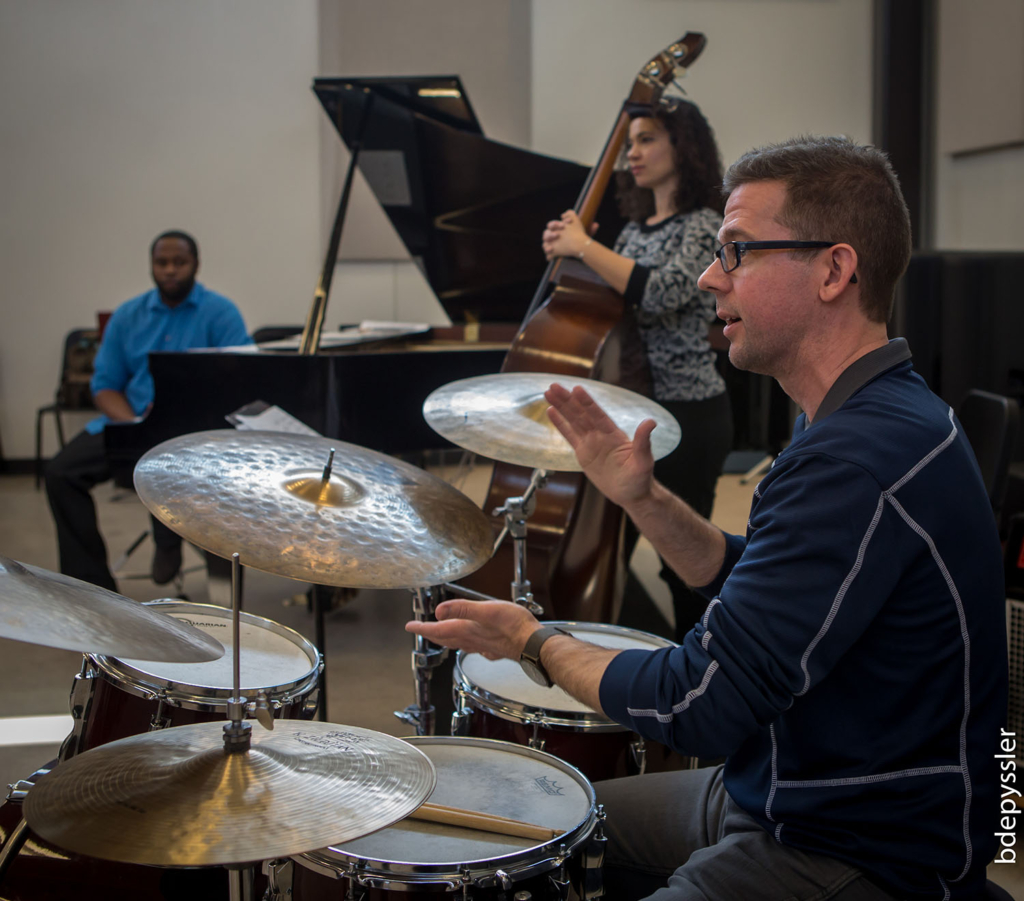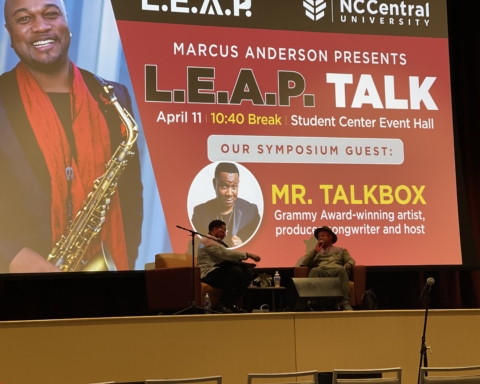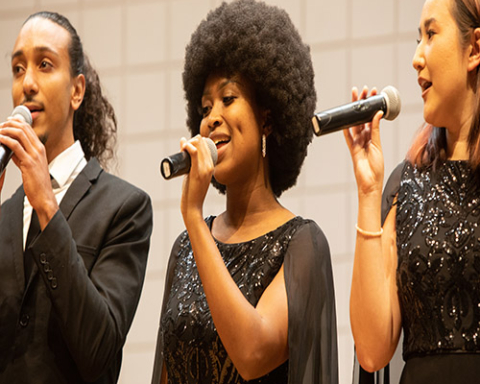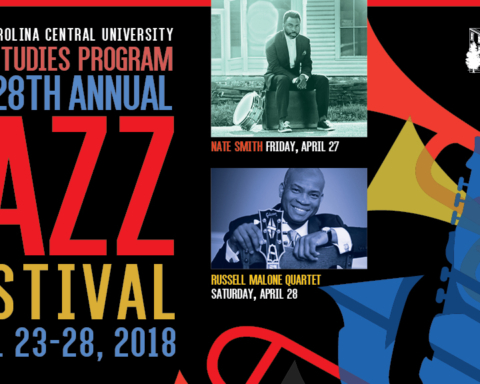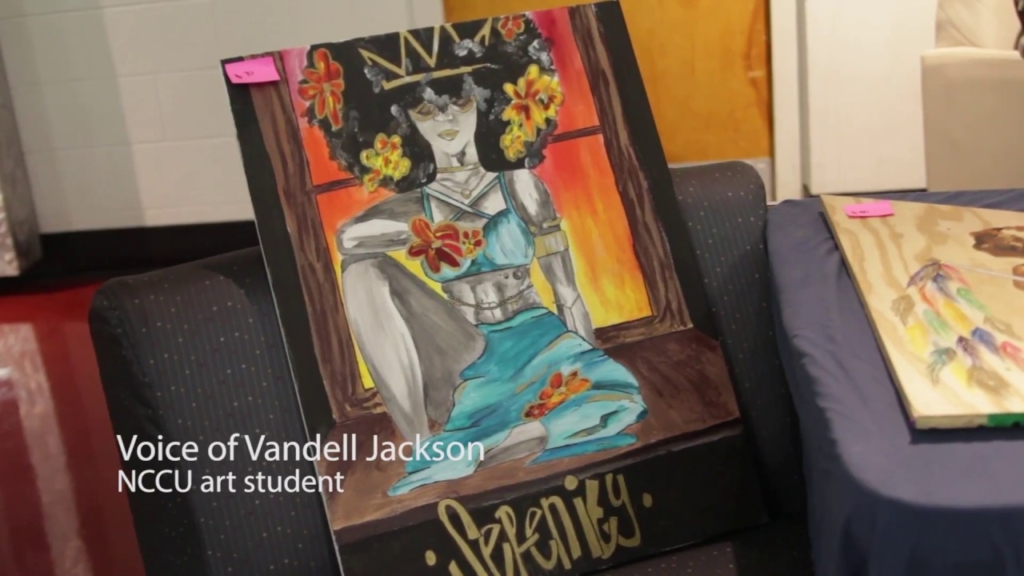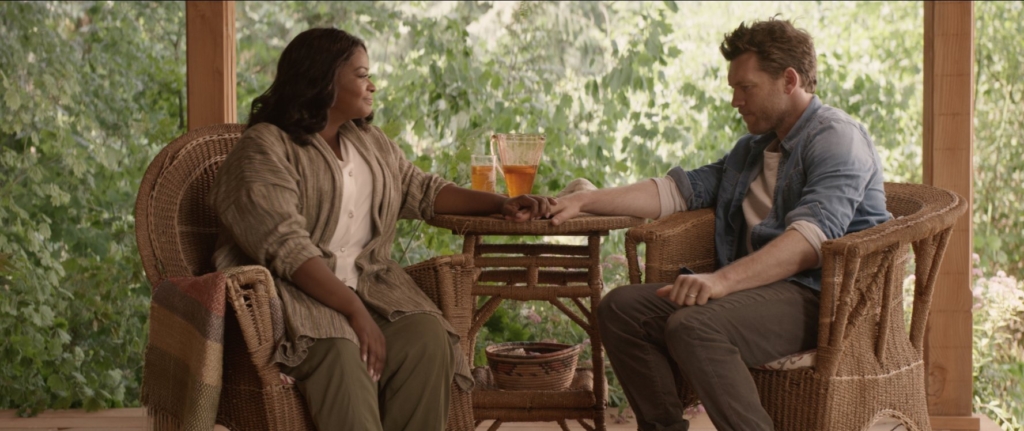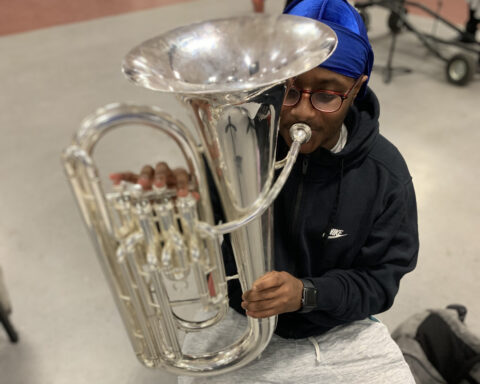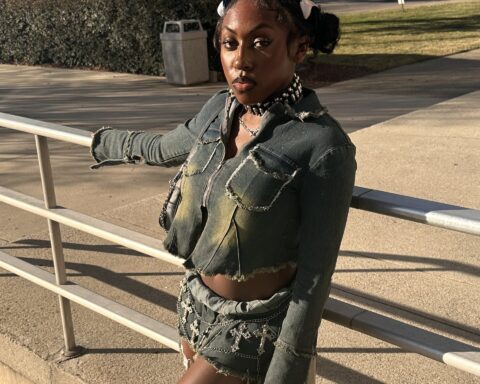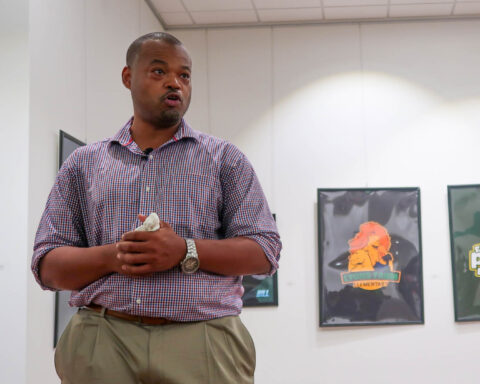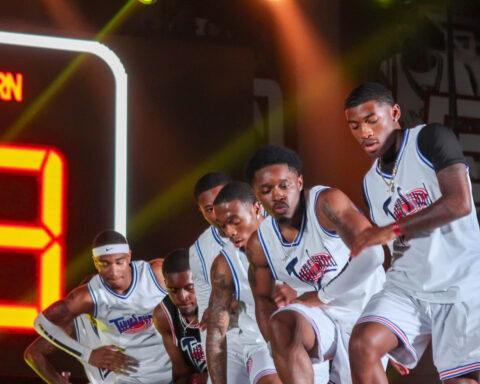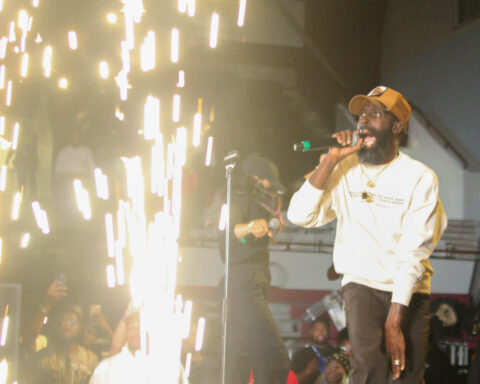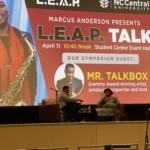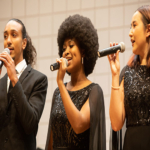Music students and faculty came Saturday to experience a unique fusion of jazz, Afro-Latin and Caribbean music. Amid short music pieces and audience participation, couldn’t help but move to the infectious beat.
On March 4, the Batuquê Trio held a workshop at N.C. Central University in B.N. Duke music room to demonstrate the use of clave rhythms in jazz and Afro-Latin music.
The Batuquê Trio is a three-person band that fuses the sounds of the Caribbean, Afro-Cuban, and Brazilian jazz. All members of the trio are graduates from Indiana University Jacobs School of Music.
The Batuquê Trio consist of pianist and Aruba native Jamaal Baptiste, bassist and University of North Carolina at Wilmington professor Natalie Boeyink, and drummer and composer Andy Smith.
“Their trio is unique because they study Latin and Caribbean music,” said assistant music professor Lenora Helm-Hammonds, who invited the group to NCCU. “It’s useful to have specialists from a different genre come in and we also don’t have a specialist like that on our faculty. We play a lot of music from the Caribbean and Latin repertoire so I thought it would be useful for the students to get the tutelage and knowledge.”
Originating in sub-Sahara Africa, clave is a staple in Afro-Cuban music. It keeps meter and is prevalent in other subgenres such as rumba, conga, samba, and timba.
“Cubans incorporated the concept of clave into their music,” Baptiste explained. “Instead of starting on the three side of the clave, three beats on the first side and two on the second, they switched it around and started on the second side.”
According to the Batuquê Trio, clave can be incorporated in several aspects of music.
“This stuff is still applicable. It’s important to understand what the bass is doing and how it fits in with the piano, guitar or drums,” said Boeyink. “In this style of music the general bassline is called the tumbao. It’s a very syncopated pattern, mostly roots and fifths. That’s how I get my students started. My role no matter the style is part rhythmic and time keeping but also part harmonic.”
To further the audience’s understanding, Baptiste described how anticipation and resolution works in clave.
“On the three side the melody is anticipated,” he said. “On the two side, there’s a resolution.”
He followed his statement with a helpful demonstration, highlighting the two parts.
The trio played pieces such as Autumn Leaves and Stella to show what they sound like using clave rhythms. As they moved toward the end of the workshop, the trio encouraged the audience to stand up. They asked for everyone to clap their hands and stomp their feet to create clave rhythms.
“I got a lot from the workshop. They showed us what clave was,” said jazz studies junior Malik Denny. “I can incorporate that into my own music because I do study Latin and Brazilian music.”
Jazz composition graduate Chucky Robinson said the workshop was “mind-blowing.” Recently, Robinson had the opportunity to travel with NCCU to Brazil to study Latin and Caribbean rhythms.
“This was a chance to hear some of the same things and get another demonstration and perspective,” he said. “I’m here to study piano so conceptually hearing Andy talk about the rhythms versus the fake versions I play was enlightening. I’m definitely going to study some more and try to get their contact information and continue to grow.”
In the future, Robinson said he hopes NCCU continues to host events such as the Batuquê Trio workshop.
Robinson added, “I’d like for NCCU to do more things like this, employing different styles of music to us to learn and publicize. It was definitely worth it.”
To learn more about the Batuquê Trio and their music, visit www.batuquetrio.com.

